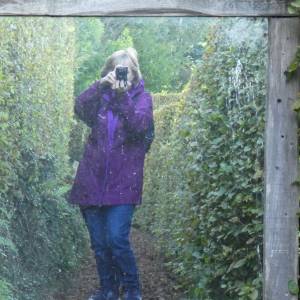Liking the lichen
I went out looking for birds and in doing so noticed this very clean lichen, I think we all know the reason for that. There are many good reasons for lichen - see info below - perhaps I can add it sits still when a camera appears.
Another good afternoon with the youngsters this time making a griddle scone and drop scones to go with the butter made yesterday. Later we all sat and discussed the difference in recipes, mixture and taste. A bonus was eating the scones with the butter and opening a jar of honey given to us by a local bee keeper. The honey tasted very good, it had a grainy testure reminding me of childhood days, the pupils loved it, I think they would have eaten anything if it had honey on it.
From the Internet:
Lichens
Lichens can survive quite happily in outer space, have been about for millions of years and are sensitive indicators of air pollution. They add amazing colour and texture to our surroundings from the limbs of ancient oaks and high mountain rocks to the mortar in our walls and churchyard gravestones. They provide a home to insects and nesting material for birds. Some lichens smell like fish while others are used to help make perfume! The characteristic orange of Harris Tweed was traditionally produced by a dye extracted from rock dwelling lichens. Scotland has an amazing diversity of lichens, with just over 1500 species. Clean air, diverse habitats, relatively cool summers and mild winters all contribute to this diversity and abundance. Scotland is important for lichens on a European and even global scale. Each type of lichen is a successful partnership between two species, a fungus and an alga (or blue-green alga). The fungus provides a protective home for the alga and in return, the alga produces food for the fungus from sunshine, water and air.

Comments
Sign in or get an account to comment.


